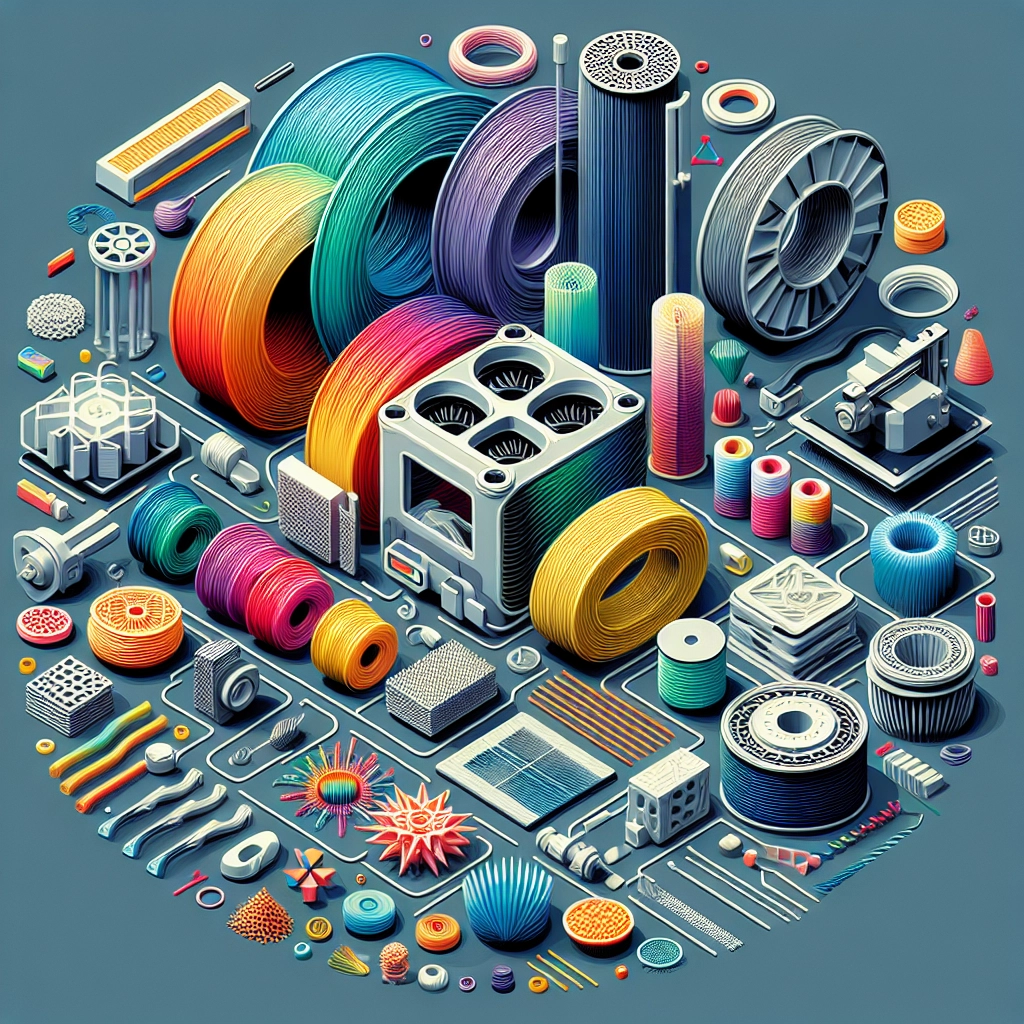Choosing the Right 3D Filament for Your Next Creation
3D printing has become a gateway for many to explore their creativity. Whether you’re a hobbyist, an artist, or someone just looking to add a personal touch to your home, the possibilities of what you can create are endless. But, if there’s one pivotal decision you’ll make in your 3D printing journey, it’s the type of filament you choose. With so many options available, how do you know which one is right for your next project? Let’s break it down!
Understanding Different Types of Filaments
Before diving into specifics, it’s important to know that 3D printing filaments come in various materials, each with its own properties, advantages, and ideal use cases. Here are some of the most popular types:
-
PLA (Polylactic Acid):
PLA is the go-to material for many beginners. It’s derived from renewable resources like cornstarch and sugarcane, making it environmentally friendly. PLA is easy to work with, produces fine details, and has a pleasant smell when heated. It’s perfect for making prototypes, toys, or decorative items, but keep in mind it’s not the best for high-temperature applications or items that need to withstand rough use. -
ABS (Acrylonitrile Butadiene Styrene):
ABS is another common filament that’s known for its durability and strength. It’s the same material that LEGO bricks are made from! With a higher melting point, it can handle more heat, making it great for functional parts. However, it does have a tendency to warp, so it’s important to print it on a heated bed and in a well-ventilated area due to its fumes. -
PETG (Polyethylene Terephthalate Glycol-Modified):
If you’re looking for something in between PLA and ABS, PETG is the way to go. It’s strong, resistant to impact, and has excellent layer adhesion. Plus, it’s not as prone to warping as ABS. PETG is great for functional prototypes and items that require durability, like phone cases or water bottles. -
TPU (Thermoplastic Polyurethane):
For those projects needing flexibility, TPU is your friend! This filament is highly elastic and can bend without breaking, making it perfect for items like phone cases or custom gaskets. Just keep in mind that printing with TPU can be a bit trickier, so it may require some fine-tuning of your printer settings. -
Nylon:
Known for its incredible strength and versatility, nylon is ideal for functional parts that require durability. However, it can absorb moisture from the air, requiring proper storage and print settings. Nylon is fantastic for gears, structural components, and even flexible designs when blended with other materials.
Factors to Consider When Choosing Filament
Once you have a rough idea of the materials available, consider the following factors to help you choose the right filament for your project:
-
Purpose of Your Print: Are you creating a decorative item or a functional piece? Understanding the purpose will guide you towards the right material.
-
Printer Compatibility: Not all filaments work with every printer. Make sure your printer can handle the filament’s temperature requirements, especially for materials like ABS or Nylon.
-
Ease of Use: If you’re just starting, opting for user-friendly materials like PLA can help you avoid filming frustrations.
-
Aesthetics: Different filaments come in various colors and finishes. Consider how the end product will look and whether a glossy finish (like that of PETG) or a matte look (like some PLA types) suits your vision better.
-
Cost: Filament prices can vary significantly. While it’s important to factor in your budget, trying out different brands or types can yield surprising results.
Unlocking Creativity
Choosing the right 3D filament can make or break your project, but remember, experimentation is key! Don’t be afraid to try different materials and settings. You might discover that a certain filament opens the door to an entirely new realm of creations. Plus, the process of learning and tweaking settings along the way can be just as rewarding as the final product.
Ultimately, the best filament for your project is one that aligns with your goals, needs, and creativity. So grab your printer, load up that filament, and let your imagination run wild! Happy printing!

